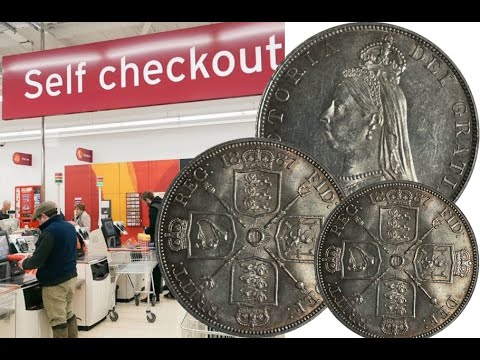In 1887, in celebration of Queen Victoria’s Golden Jubilee, the Royal Mint introduced a four shilling silver coin called (since every denomination of British money must seemingly have multiple obscure names) a “double florin”. The coin was widely mocked for its design, with a tiny (but accurate) crown on the queen’s head and a design on the back described as an “explosion of a kitchen boiler”, complete with flying frying pans.
The coin was struck only for four years, discontinued in 1890. Nonetheless, the coins remained in circulation and were legal tender. When Britain adopted decimal currency in 1971, the old coins were accepted for a period of time but change was given only in new coins, with the old being returned to be taken out of circulation. But the act prescribing the elimination of pre-decimal coins neglected to mention the double florin which, although legal tender, was rarely if ever seen in circulation since by that time, due to debasement of the British pound, the silver in the coin (0.6727 troy ounce) was worth much more than its official conversion value of £0.20.
So, should you happen to have a double florin in your pocket, you can spend it today in Britain (assuming you could convince a merchant it was still valid) for a value of 20 pence. The coin’s bearing no denomination anywhere would only increase the confusion. Double florins in good condition are worth £100 or more to coin collectors, so you can do considerably better than using it to buy a stick of gum.
